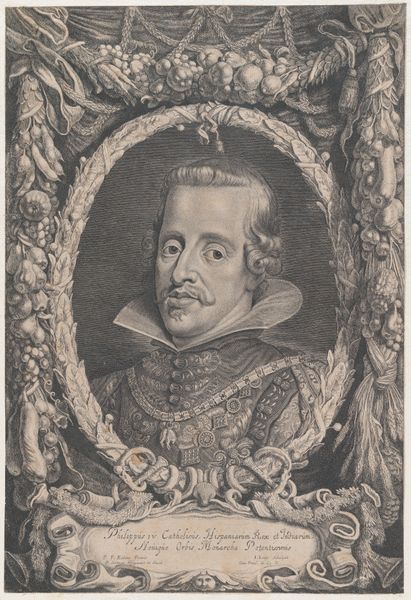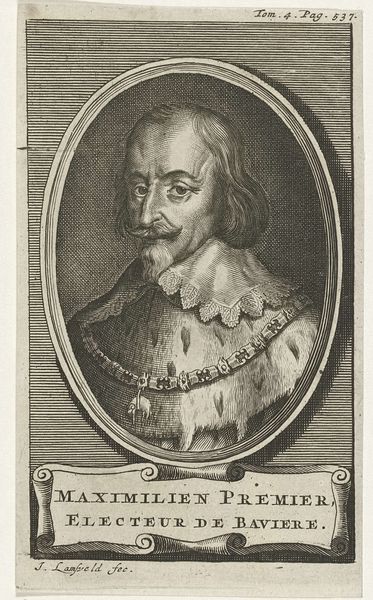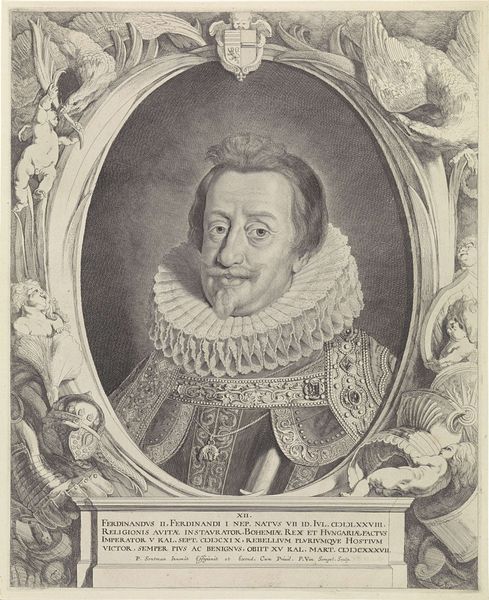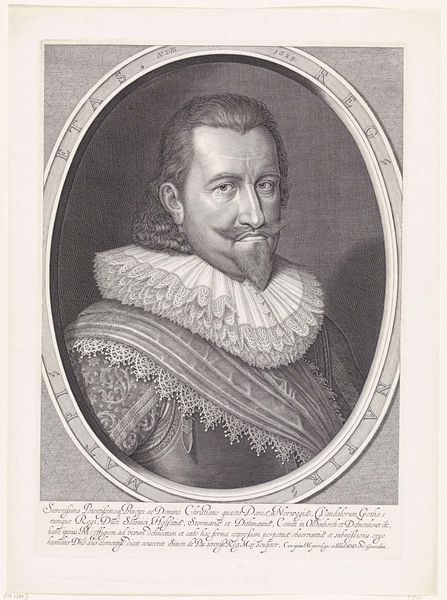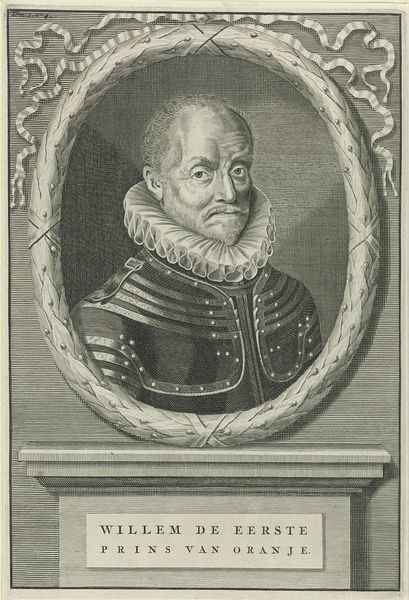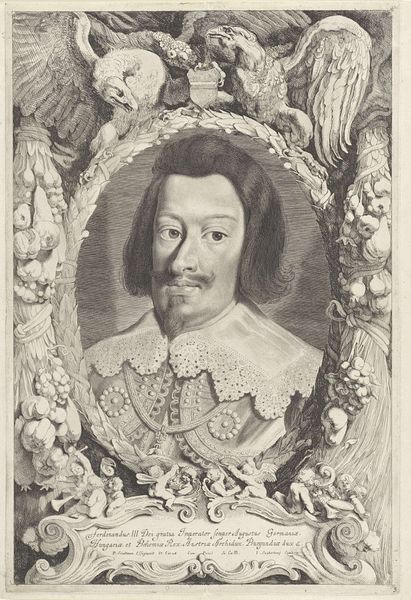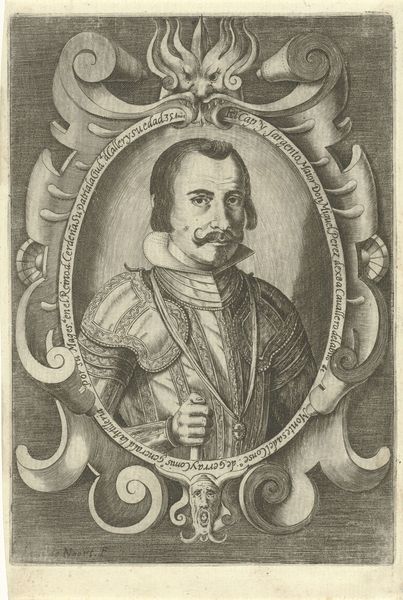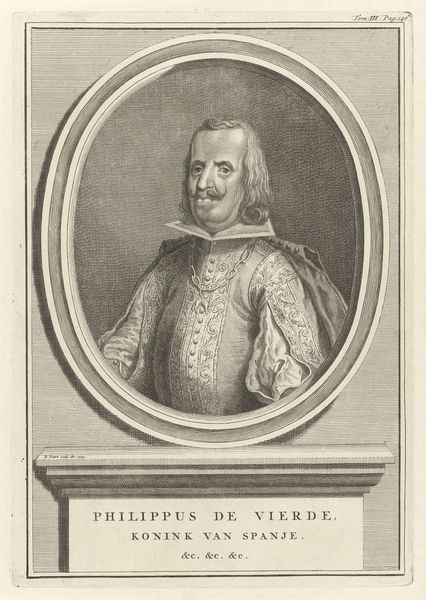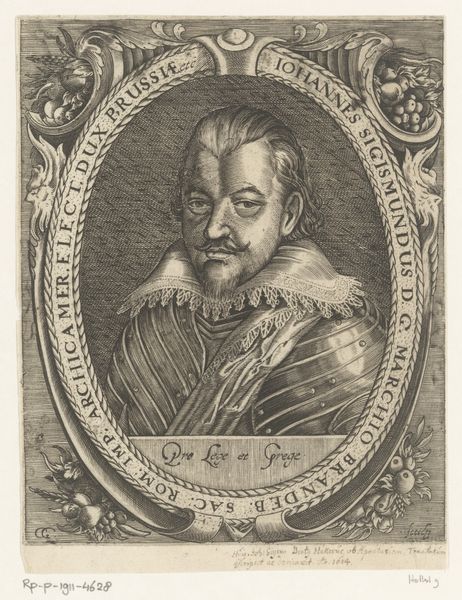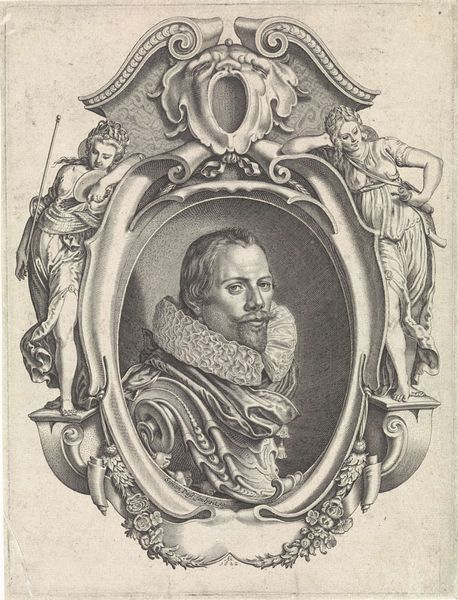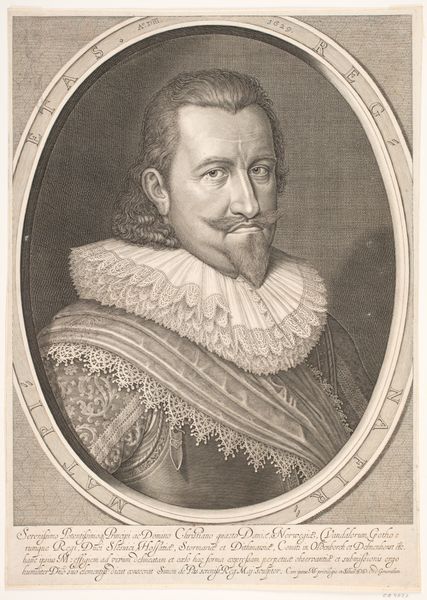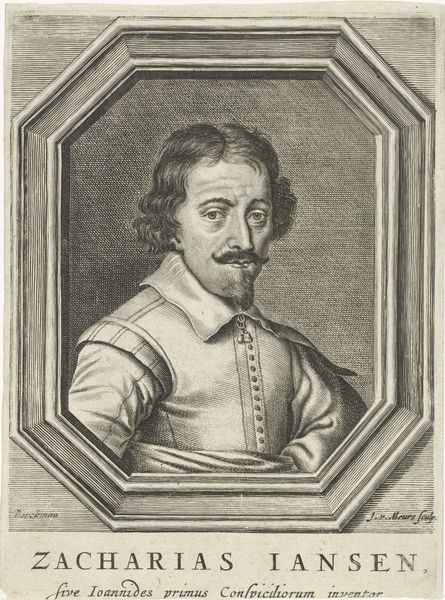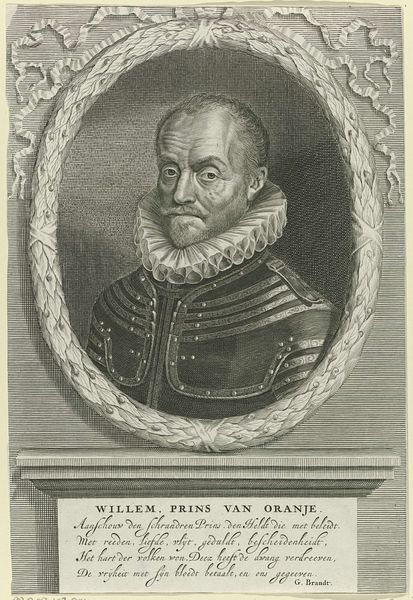
print, engraving
#
portrait
#
baroque
# print
#
old engraving style
#
framed image
#
history-painting
#
engraving
#
realism
Dimensions: height 408 mm, width 282 mm
Copyright: Rijks Museum: Open Domain
Curator: Here we have "Portret van Ferdinand II (Duits keizer)," or "Portrait of Ferdinand II, Holy Roman Emperor," an engraving dating from 1644 to 1650 by Pieter van Sompel, housed right here in the Rijksmuseum. Editor: My immediate reaction is the sheer detail! Look at that ruff; it practically pops off the page. It’s imposing, like peering back in time at this powerful figure. Curator: Engravings like this weren't simply decorative; they were powerful tools for disseminating imagery of rulers. Think of it as early PR, shaping public perception. Consider the symbolic framing – the laurel, the imperial eagle – it’s all carefully constructed to project authority. Editor: Exactly! And I am so interested in understanding the technical skill of Sompel to have used these tools in order to translate painting into printmaking of that time. The crispness of the lines, the subtle shading he achieved to mimic tonal gradations – the level of craftsmanship really shines. Look at the paper itself – was it locally sourced? Did the economics of printmaking enable wider access to images than painting at the time? Curator: I imagine, considering the realities of the Thirty Years' War, access to specialized materials and skilled labor would have been significant constraints. How does the political climate shape the artwork's creation, circulation, and ultimate reception? Was this image commissioned to bolster flagging morale, or assert imperial dominance? Editor: Right, understanding the material context offers so much. Consider how the engraving process itself influenced the final product, that this wasn't an original portrait sitting; that instead the act of translation shapes meaning and message, influencing the public persona of Emperor Ferdinand. What was involved in this production and what are the costs? Who profited and who did not from the consumption of this work? Curator: It is hard to underestimate the enduring political significance and artistic impact that printed portraits like these possessed for widespread visual culture, and it makes me rethink what portraits do and are for when mass produced and circulated. Editor: Definitely, thinking through labor and materiality, reveals new understandings. Thank you.
Comments
No comments
Be the first to comment and join the conversation on the ultimate creative platform.
